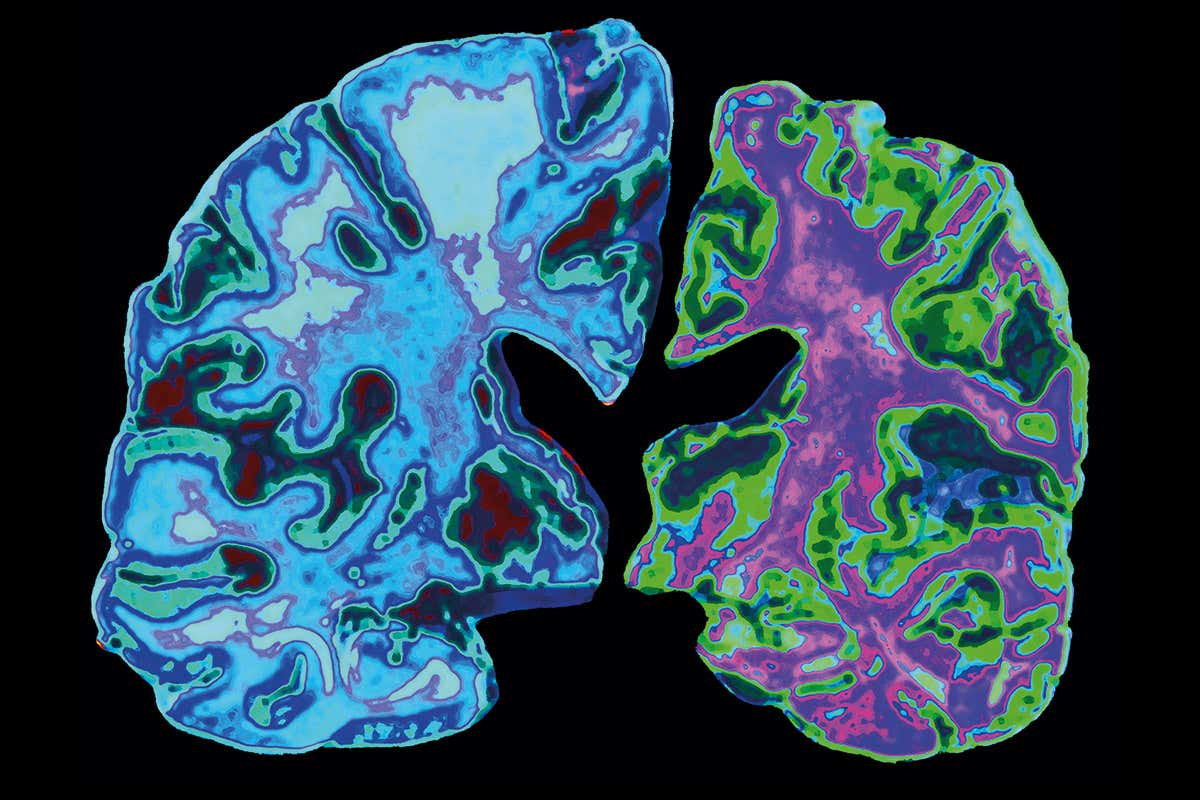Scientists are creating history as they research further information on a cure to combat a fatal form of memory loss, Alzheimers diease, also known as senile dementia. Alzheimers disease occurs when brain cells and their electrical connections to each other are torn down by proteins in the brain, eventually leading to memory loss and the destruction of other significant mental operations. Since the brain controls all of the functions in the body, there are various ways that symptoms can present themselves, such as confusion, mental decline and jumbled speech. However, researchers are making progress in treating Alzhimers, and they have now come across new discoveries that can assist them in creating a cure.
When a loved one is diagnosed with senile dementia, it can be incredibly devastating for those close to the patient. Once the family member begins to undergo symptoms, the individual will require constant care and support, which may lead to a decreased quality of life for the primary caregivers. The costly price of treatments and alternate caregivers may be a financial challenge for some families, especially since Alzheimers patients need around-the-clock care. However, support is available, and it has been shown that primary caregivers with support (examples include friends, training courses, help lines, and support groups) have an easier time with their duties. There are various courses available that demonstrate how to properly provide care and interact with a loved one experiencing symptoms. Since Alcheimers is a disease that is distressing to experience for patient and family, it is significant to reach out for assistance when necessary.
The brain is composed of many nerve cells, or neurons, that are connected to each other through synapses, sites where neurons communicate using electrical impulses. These cells have specific functions that are critical to humans in everyday life, including responding to the environment when an individual interacts with stimuli. In senile dementia, plaque, a type of protein, is built up between neurons, and tangle, another type of protein, accumulates within nerve cells. Neither of these proteins are supposed to be present, so they interfere with the function of brain cells. Eventually, the connections between neurons are lost to the plaques and tangles, and the nerve cells themselves may be impacted by the displaced proteins. This leads to Alzheimers, and as more proteins proliferate, the disease worsens.
Microglial cells, which primarily make up the nervous and immune system and remove damaged neurons to prevent diseases, may hold the key towards designing a cure for Alzheimers. When working with mouse models in 2019, scientists discovered pathways, called LC3-associated endyotycosis (LANDO), in these cells. The pathways can keep the plaque protein from building up between neurons, therein, slowing down the process of neurodegeneration. If the pathways are present in enough cells, they may be able to completely counter memory loss and Alzheimers itself. Scientists are now further researching this solution in mouse models, as they have been forging compounds to inject in mice. In these models, the compound has demonstrated effectiveness in improving cognitive skills and lessening neuroinflammation. Even if this technique is not efficient in preventing Alzheimers, it may be useful in the fight against specific types of cancer, because it hampers the formation of tumors.
An alternative path for fighting Alzheimers is to attempt to treat neuroinflammation, a natural response to a brain injury that takes place within the brain or spinal cord and is caused by excessive proteins. Once proteins cause neurons to die, the brain responds by increasing the levels of inflammation, causing the symptoms of senile dementia. Neuroinflammation, being the direct cause of Alzheimers, is further triggered by the bodys natural response to it, so when neuroinflammation increases, the disease is given an opportunity to take place. While the plaques and tangles begin the slow decline of Alzheimers, inflammation caused by the immune system begins the complete destruction of mental functions. If the process that triggers inflammation can be interrupted entirely, much progress will be made in the fight against Alzheimers. Currently, researchers are studying the relationship between the nervous system and immune system to create a drug that can prevent neuroinflammation, the cause of many mental diseases, including Alzheimers and Parkinsons. It will be years until it is produced, has passed inspections, is found successful in clinical trials, and eventually, reaches the market.
There is currently no cure for Alzheimers, though there are various options one can choose that will slow down the progression of the disease or aid in coping with symptoms. For mild Alzheimers, cholinesterase inhibitors lessen symptoms by blocking the breakdown of acetylcholine, norepinephrine, serotonin, and somatostatin, chemicals for communicating messages between nerve cells in the brain. For those with more severe cases, N-methyl D-aspartate antagonists regulate the amount of chemicals to forestall the death of neurons. These types of treatment proteins come in many different forms, including over-the-counter drugs.
Even though Alzheimers threatens the lives of millions every day, there are treatments on the horizon that will allow for it to become a non-lethal disease. However, the cure may already be present in the body in the form of LANDO pathways in microglial cells, and even if this treatment isnt successful, there are other generic drugs that can lessen symptoms. Alzheimers disease has been around for centuries, but with recent scientific and technological advancements, there may be a future where Alzheimers is a remediable disease.
Resources
Alzheimer-Related Protein Suppresses Gliomas. (2020, March 01). Retrieved October 25, 2020, from https://cancerdiscovery.aacrjournals.org/content/10/3/332.2
Branchi, V. (2019, December 01). Top 10 Emerging Technologies of 2019. Retrieved October 25, 2020, from https://www.scientificamerican.com/article/top-10-emerging-technologies-of-2019/
How Is Alzheimer’s Disease Treated? (2018, April 1). Retrieved October 25, 2020, from https://www.nia.nih.gov/health/how-alzheimers-disease-treated
Misfolded Proteins. (n.d.). Retrieved October 25, 2020, from https://www.alzdiscovery.org/news-room/tags/misfolded proteins/
Pathway discovered that prevents buildup of Alzheimer’s protein. (2019, July 27). Retrieved October 25, 2020, from https://www.stjude.org/media-resources/news-releases/2019-medicine-science-news/lando-pathway-prevents-alzheimers-protein-buildup.html
Pathway discovered that prevents buildup of Alzheimer’s protein. (2019, June 27). Retrieved October 25, 2020, from https://www.sciencedaily.com/releases/2019/06/190627143952.htm
What is Alzheimer’s? (n.d.). Retrieved October 25, 2020, from https://www.alz.org/alzheimers-dementia/what-is-alzheimers
 Diya Nainwal, Alumni at AAHS
Diya Nainwal, Alumni at AAHS 
 Your Brain on the Holidays
Your Brain on the Holidays